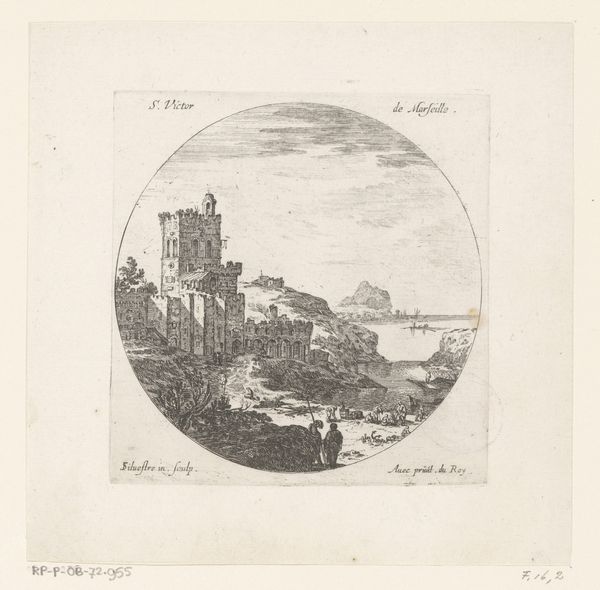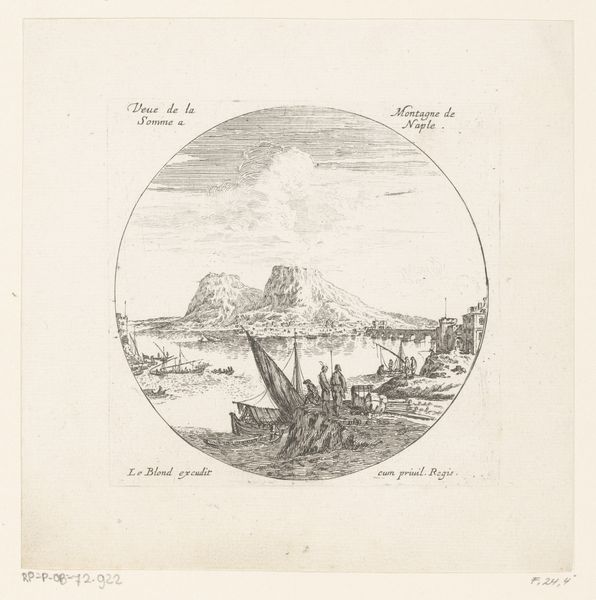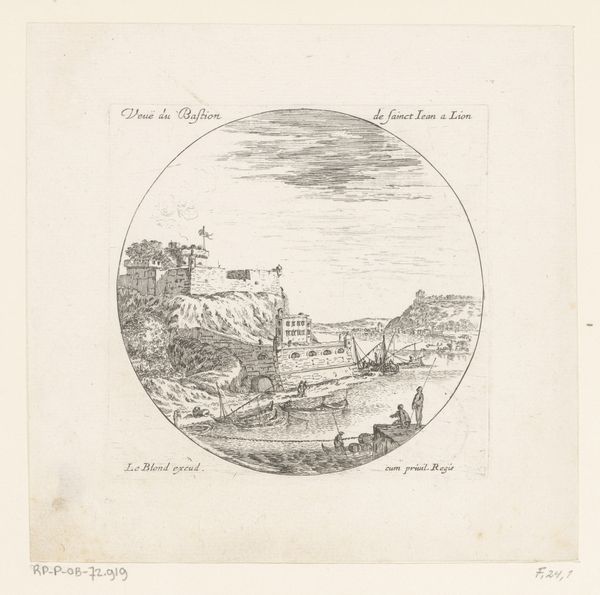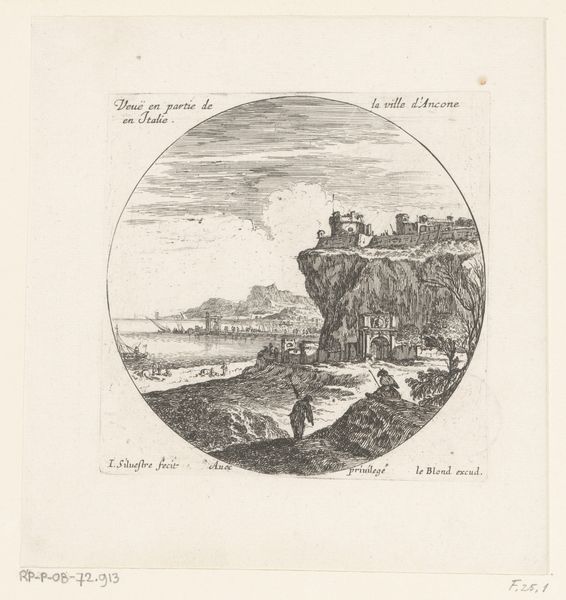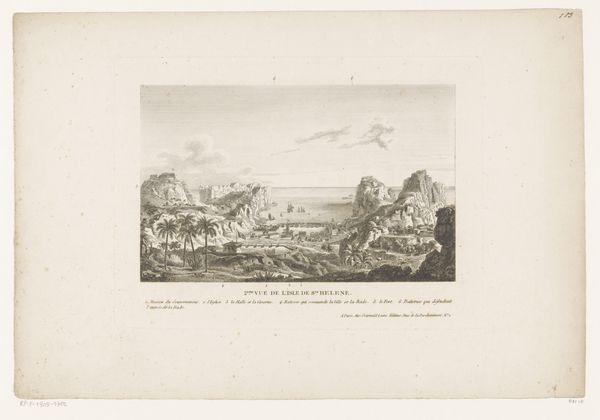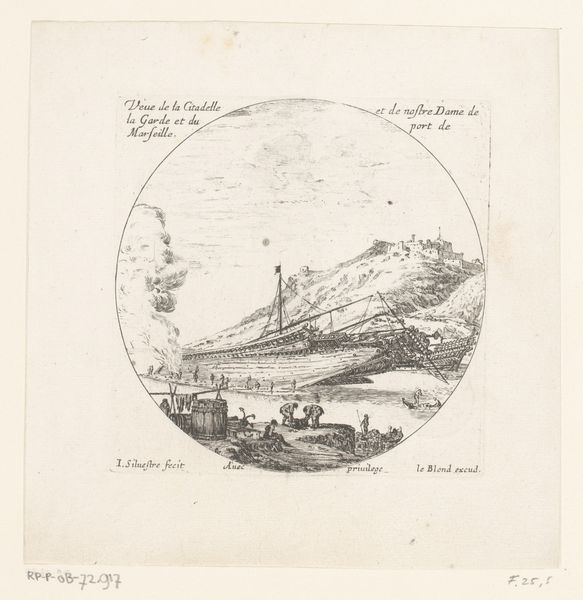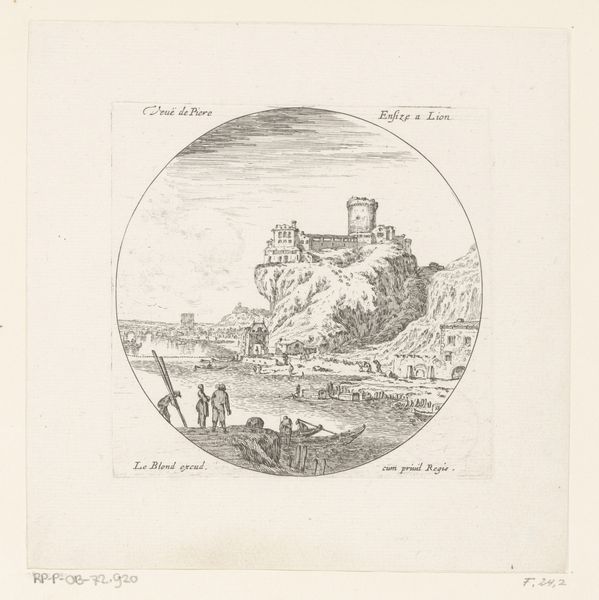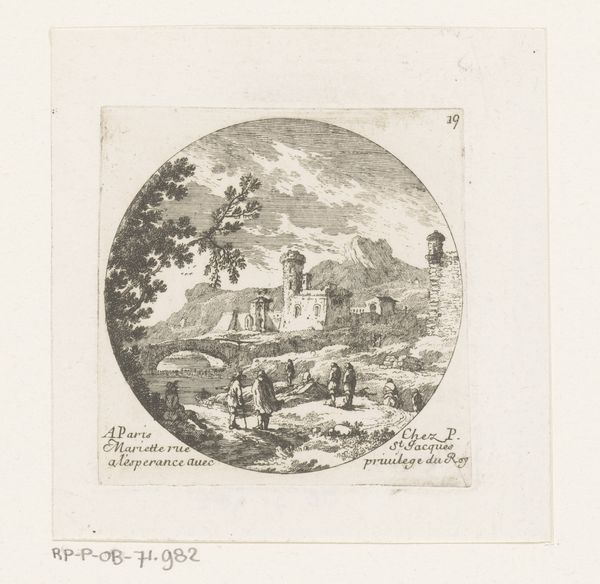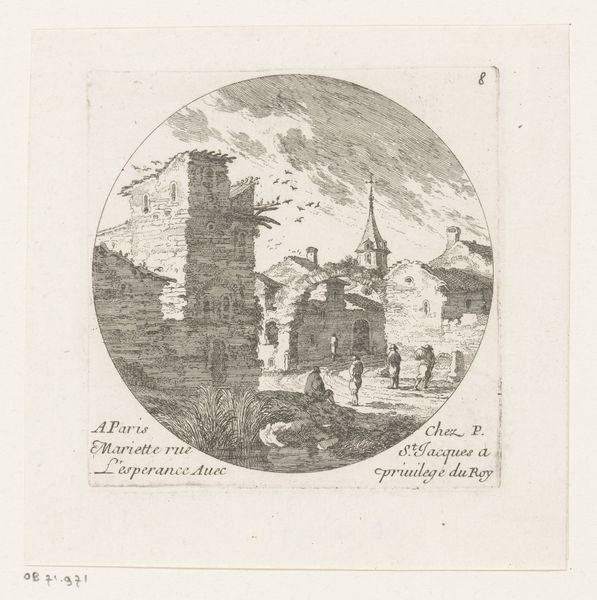
Gezicht op een haven met rotsformatie op de achtergrond 1631 - 1657
0:00
0:00
print, etching, engraving
#
baroque
# print
#
etching
#
landscape
#
cityscape
#
engraving
Dimensions: height 125 mm, width 121 mm
Copyright: Rijks Museum: Open Domain
Editor: So, here we have "View of a Harbour with a Rock Formation in the Background," an etching and engraving by Israel Silvestre, made sometime between 1631 and 1657. It feels… industrious, yet somehow also calm? What jumps out at you when you look at it? Curator: You know, industrious *is* a great word. The bustle on the shore almost sings, doesn't it? And yes, a strange serenity. Silvestre really captures that Baroque fascination with dramatic landscapes tamed by human endeavor. The etching almost vibrates. Doesn't the texture make you want to run your fingers across that imposing rock? But, tell me, does the artist's hand feel removed from this to you at all, or can you sense their presence within this seemingly simple landscape? Editor: I do see his hand – it feels considered, deliberate. Not photo-realistic at all. How does that relate to the Baroque style, though? Curator: Good question! Think about what "Baroque" usually brings to mind – drama, movement, intense emotion. Here, Silvestre isn't giving us a tempest, but he *is* hinting at a grand, almost stage-like scene. That contrast between the natural world and humanity is where the Baroque sensibility emerges for me. It's like a theater set, only real. Editor: That makes perfect sense. It's not just a landscape; it's a *presentation* of a landscape, carefully curated. Curator: Precisely. It’s almost as if Silvestre is inviting us to ponder humanity’s role as both observer *and* participant, but in a wonderfully gentle way, don't you think? It gives me pause, considering the drama unfolding around us every day! Editor: I never would have looked at it that way on my own. Thanks. I'm going to try and remember that next time I visit the Rijksmuseum. Curator: Excellent! And maybe bring a magnifying glass. I hear that the microscopic brushstrokes can give us yet another peek behind the Baroque curtain!
Comments
No comments
Be the first to comment and join the conversation on the ultimate creative platform.
